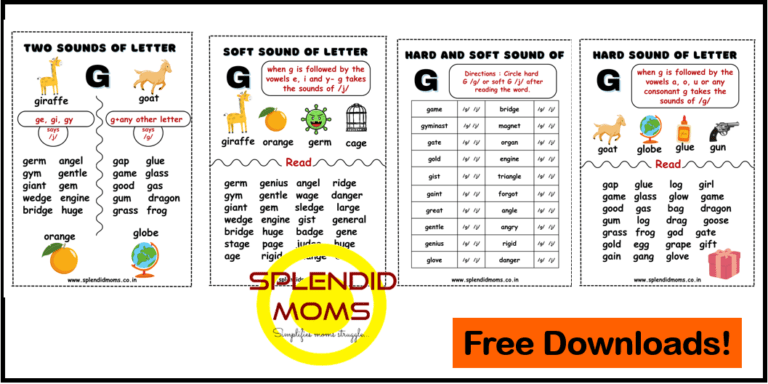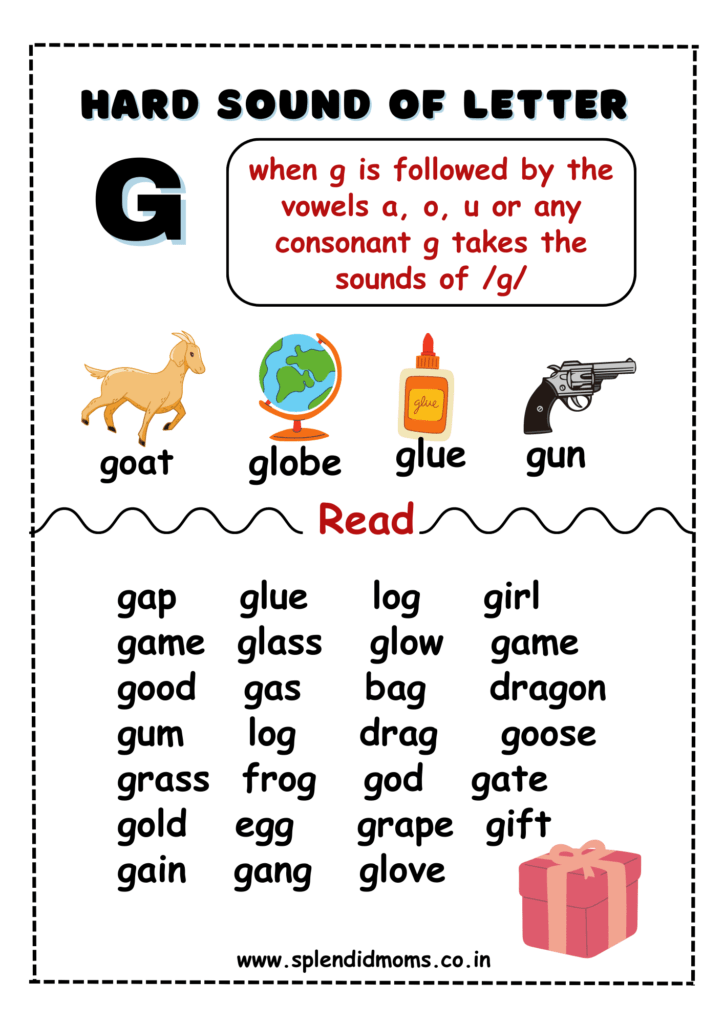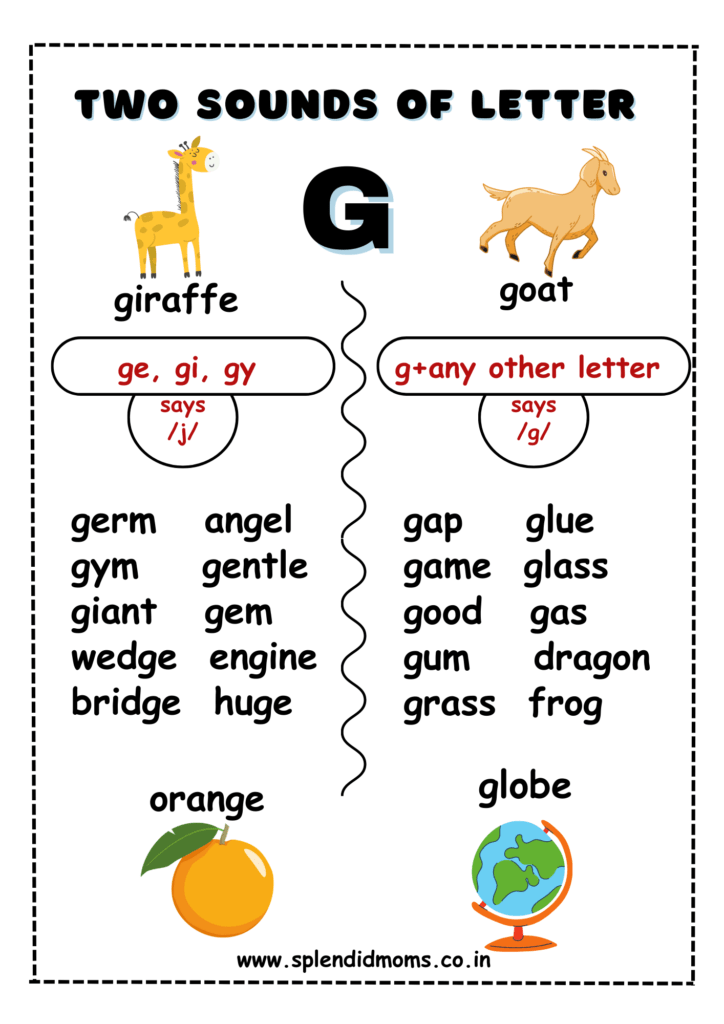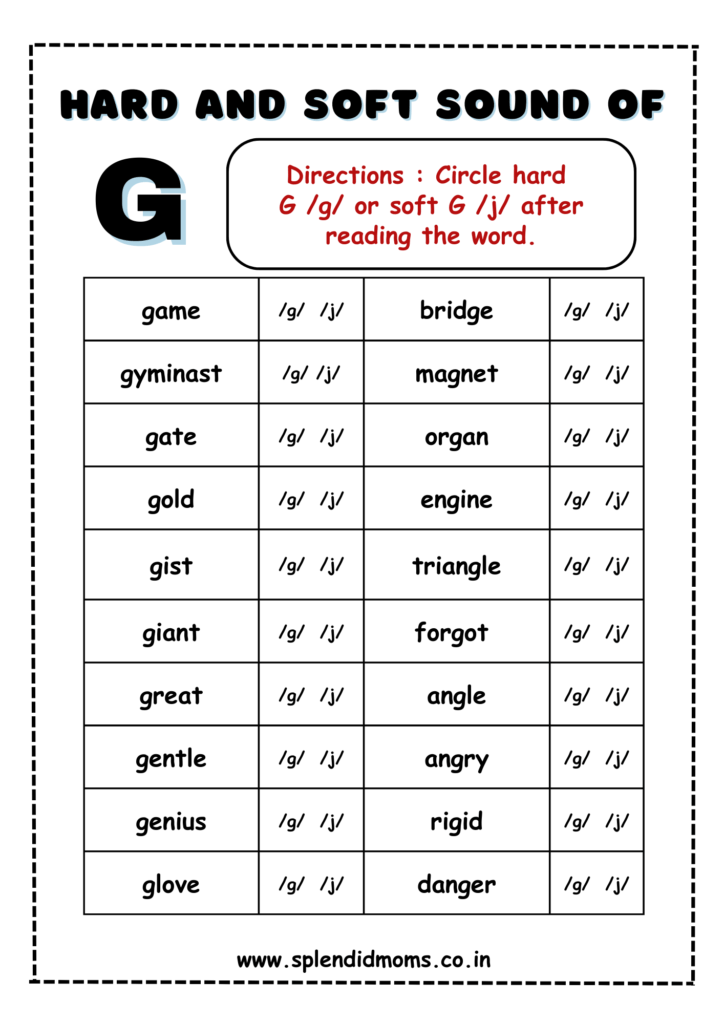Two sound of G - Hard G Soft G

Introduction:
Welcome back readers, like letter C, “G” also possesses two distinct sounds? In this post, we will explore the fascinating dual personalities of “G” and provide you with examples to help you master its pronunciation.
Soft Sound of “G”:
When “G” encounters the vowels “e,” “i,” or “y,” it transforms into a gentle sound, resembling a quiet giggle. Let’s delve into this softer side of “G” with some examples:
Gem: Imagine discovering a sparkling “gem.” It refers to a precious stone. Pronounce it as “jem,” with a soft “j” sound at the beginning.
Giant: Encounter a towering “giant” in your imagination. The word is pronounced as “jai-uhnt,” emphasizing the soft “j” sound.
Gym: Engage in physical activities at the “gym,” a place for exercise and fitness. Say it as “jim,” with that gentle “j” sound.
Hard Sound of “G”:
Now, let’s explore the bold and assertive side of “G” when it meets the vowels “a,” “o,” or “u.” Brace yourself for some powerful examples:
Game: Dive into a thrilling “game” filled with excitement and fun. Pronounce it as “gaym,” with a strong “g” sound at the beginning.
Goat: Encounter a lively “goat” with its playful antics. Say it as “goht,” emphasizing the powerful “g” sound.
Gum: Chew on a piece of tasty “gum” to freshen your breath. Pronounce it as “guhm,” with that assertive “g” sound.
When to Teach this Topic to Kids:
Introducing the two sounds of “C” to kids is an important step in their early reading journey. It is typically taught when they have a solid grasp of letter recognition and basic phonics skills. This topic is suitable for children in the early stages of learning to read, usually around kindergarten or first grade.
Why Learning this Rule is Important:
Understanding the two sounds of “G” has numerous benefits for young readers. Here’s why it’s important:
Vocabulary Expansion:
Learning the soft and hard sounds of “G” allows kids to read and understand a wider range of words. It helps them build their vocabulary and comprehend various texts more effectively.
Correct Pronunciation:
Knowing when to use the soft or hard sound ensures that kids pronounce words correctly. It helps them communicate clearly and confidently.
Spelling Accuracy:
Recognizing the two sounds of “G” assists children in spelling words accurately.
Conclusion:
Congratulations, language explorers, for unlocking the secrets of the letter “G” and its two captivating sounds! By mastering the soft and hard sounds, you’ve added powerful tools to your linguistic arsenal. Remember, understanding the dual personalities of “G” expands your vocabulary, improves pronunciation, and enhances your spelling skills. So, embrace the versatility of this letter, practice its sounds, and let your language skills soar!




